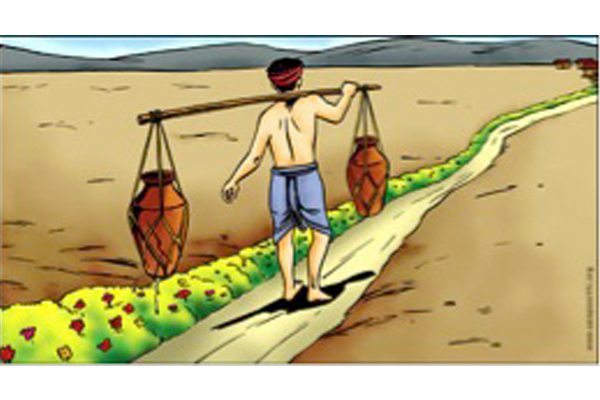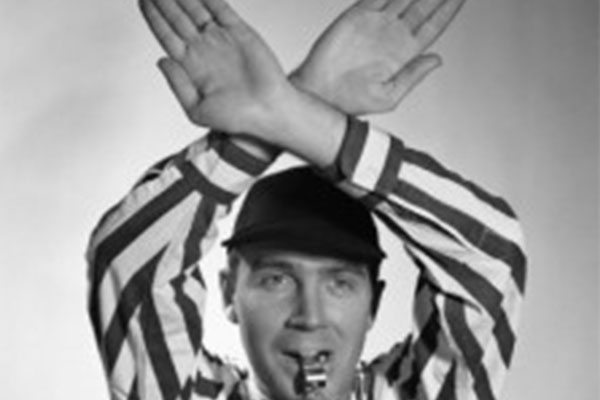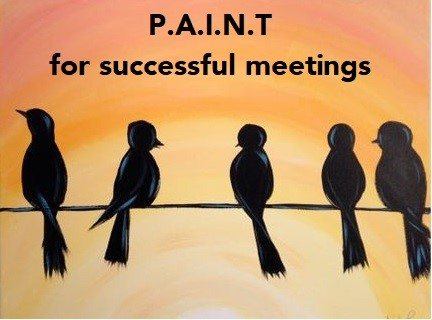We fall in love with stories as small children – and never really outgrow it. Hence, one of the most effective ways of engaging participants in a workshop is by the effective use of stories. Here are a couple of stories that you may use with your teams!
Tag: Facilitation

As any music band out there on the internet today, our band was quite excited when we took the step of working towards putting out a full fledged album. We had couple of original compositions but did not quite know where to start. But, we decided to own the entire process and thus began the long and eye-opening process of backend production.

Last time I was at Cha Bar, Delhi I noticed a sticker stall inside. The guy was selling fridge stickers and he taught me some amazing lessons about marketing. Here are the lessons:
Continue reading “Marketing Lessons From A Vendor At Cha Bar”
The below article has been contributed by Joey NG, a Senior Facilitator with FocusU Singapore.
Here is a task for you: Count the number of passes made by the players in white, in this video here:
Did you say 12… or was it 13? Hold on to that answer…. But, midway through the video, a man in a gorilla costume walked into the middle of the action, thumped his chest and slowly walked out the other side. Did you notice the gorilla? Well, if you did not – you are in good company!…When this experiment was conducted at Harvard University several years ago, more than half the participants failed to notice the gorilla. They were so focused on counting the passes that they completely missed the chest-thumping ape. This study, titled ‘The Invisible Gorilla’ by psychologists Christopher Chabris and Daniel Simons, is one of the best-known experiments and it shows that our attention has a capacity limit – we can only consciously read and process a limited amount of information at any one time.
At any given moment, facilitators are exposed to vast amount of sensory information, each vying for his attention. It is humanly impossible to process every bit of information at the same time due to the limited mental bandwidth he operates with. To make up for this inherent shortcoming, facilitators need to operate with a high level of Situation Awareness (SA). SA means making sense of the current situation and mentally mapping out the cause-and-effect relationships, well in time.
Aside from detecting abnormalities, SA also allows facilitators to capture information that are subtle yet significant. While a facilitator cannot control the amount of sensory elements present, he can however determine the types of elements to focus on. The more acute his SA is, the more sensitive he will be to his surroundings and this places him in a better position to anticipate changes and introduce timely intervention. High level of SA enables facilitators to:
1) Maintain a high level of safety.
Prevention is better than cure. Having a high SA would lead to a heightened sense of anticipation. Because facilitators are able to project the plausible consequences of the current situation, this gives them that extra second to introduce preventive measures or eliminates threats before they turned into actual risks.
2) Identify opportunities to enhance the learning experience.
Seeing things that others do not is one of the hallmark of effective facilitation. While most would focus on actions that are at the heart of the activity, seldom would participants reflect on the minor incidents – incidents that come as quickly as they go. Part of SA is about being sensitive to these minor, and to many, insignificant incidences. Insightful learning, the kind that people do not recognize at first but seems so apparent when pointed out, are created when facilitators are able to spot these opportunities and create meaning out of them.
3) Adjust delivery style.
Another hallmark of effective facilitation is the facilitator’s ability to adjust his delivery style. Not knowing what participants are truly feeling is a major stumbling block because the facilitator might be thinking he is doing the ‘right’ thing and would continue doing so. By the time participants surface their concerns, it might already be too late because the damage is done. Two common cases are; 1) When the facilitator is being too strict with the rules. 2) When the facilitator uses languages that some participants are uncomfortable with. For example, jokes on sexual orientation might not fit well with participants who are strong believer of the LGBT social movement.
However, when facilitators are able to detect signs of discomfort, or feel a sense of passive aggressiveness from the participants early, they can make the necessary adjustments to their delivery before more damage is done.
4) Making better decisions, spontaneously.
Facilitators make spontaneous decisions all the time because no matter how well the programmes are designed and planned, it is not possible to factor in every possible variable. Seasoned facilitators have countless tales of curved-ball anecdotes. In order to make better and more informed decisions to respond to changing and emerging patterns, facilitators need to stay two steps ahead of the situation. For example, knowing what to do the moment grey clouds are spotted or how to adjust the programme in the event of a delay in catering services.
Here is the good news – SA is not an inborn ability that is bestowed to a lucky few. SA is an ability that facilitators can work on and be better at, it is a sense that can be trained, like a highly trained nurse who can read the faintest of pulse or a skilled wine sommelier who can give a full description with a single sip. Increased exposure and field time is widely acknowledged as key pillars in building up one’s SA. One of the better-known case studies is about a seasoned fire fighter, who made the decision to pull his team out of a burning building moments before it collapsed, though there were no obvious signs of any structural damage. In an interview later, the fire fighter said he felt a hunch and something in his mind told him that the building was going to give way soon, and that made him pull his team out.
Although experience is key to the development of SA, paradoxically, experience is also its biggest enemy because the more experienced a facilitator is, the more likely he will fall into a routine mindset, let his senses down and allow complacency to slip in. Below is a list of techniques rookie facilitator can work on to improve their SA and seasoned practitioners can adopt to guard against complacency.
- Active involvement
SA is not a passive process, it does not just come on to the facilitator. For SA to function effectively, one has to play an active role and be with the situation. This means the facilitator has to be mentally present, consciously making sense of the events that are taking place around him. Active involvement requires the facilitator to stay engaged with the process and be as involved as the participants through the experience. - Setting goals
Professor Kip Smith and Dr. Peter Hancock, prominently researchers in the field of aviation and human behavior in dynamic situations, defined SA as ‘adaptive, externally directed consciousnesses. They see SA as an intentional behavior that is directed towards the goal. i.e, we assess what we set out to assess. Our SA is most sensitive towards the objectives we set because our focus is primarily on them.Setting goals will help funnel our attention towards key areas. Before an activity commences, facilitators should be clear on where to focus their attention on, for example, to capture specific learning opportunities and/or to mitigate risk at a precise point. These points for attention could also be a specific time, juncture, person, situation, reaction or conversation. - Delegate responsibilities to co-facilitators or participants
There will be occasions where there are simply too many things taking place at the same time. In such instances, a facilitator can either split the area of focus with his co-facilitator (one concentrate on safety while another concentrate on learning moments) or delegate secondary roles to the participants, such as ‘Safety Officer’. - Expose to a variety of experiences
Facilitators who limit themselves to a small number of programme types will develop very sharp sense of SA but only in environments they are extremely familiar with. Conversely, facilitators who expose themselves to a wider range of experiences will develop well-rounded SA that can be applied effectively across various situations. For experience facilitators, exposing themselves to fresh challenges is one of the best way to guard against complacency because it reminds them that learning is an on-going process and that no facilitator can ever claim to have enough SA.
So, if you are a Facilitator, ask yourself – how good if your SA? Are you able to latch on to behaviors so instinctive that it is invisible to most, but so apparent once they are pointed out? Or like the gorilla in the video, do you miss the “learning moments”?
Do share your thoughts with us!
This below activity was put together by Tom Wujec a fellow at Autodesk.
The Marshmallow Challenge is a remarkably fun and instructive design exercise that encourages teams to experience simple but profound lessons in collaboration, innovation and creativity.
The task is simple: In eighteen minutes, teams must build the tallest free-standing structure out of 20 sticks of spaghetti, one yard of tape, one yard of string, and one marshmallow. The marshmallow needs to be on top.
Continue reading “The Marshmallow Challenge!”
In part 1, I covered how organizations bleed when they fail to foster a culture of ownership. In this article I will discuss 3 powerful ways to foster ownership and improve the quality of results that you get as a team.
Facilitators, trainers, teachers, leaders. What’s one thing these individuals all have in common? Working with groups, large and small. Whether these groups are made up of children, newbies in a company, or senior level management, crowd control is a must. The art of crowd control lies in using a multi-facetted approach to training your crowd to follow your lead and do as you request. This is not a simple process. Giving a command or request to a crowd that does not yet trust you, does not yet respect you, and does not yet know your verbal and non-verbal cues well enough to follow them will result in these commands falling flat, or being intentionally ignored.
Continue reading “Teaching Without Teaching: Handling a Crowd”
Isn’t it true that most of us spend a lot of time in meetings? We’ve all been a part of meetings with no direction, which run over time and leave us clueless. Having been part of several meetings like this has given me the opportunity to identify some very basic, but important, pointers for a successful meeting.
The next time you stay at a good hotel, watch the staff there going about their work closely. For anyone wanting to get insights on team work, the marquee hotels are fertile ground. Working as a team, in such places – is not just a choice, but a way of life.













